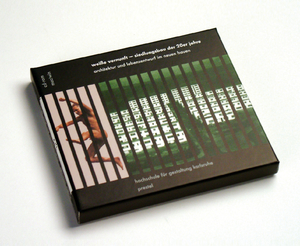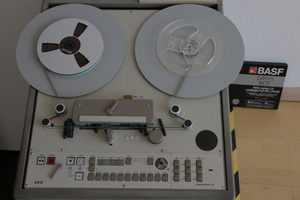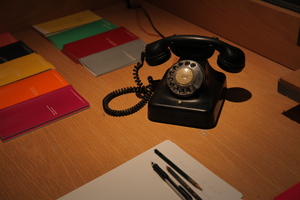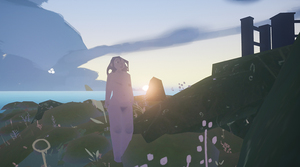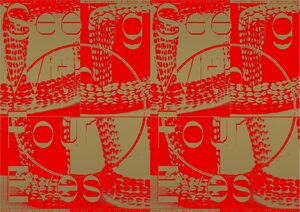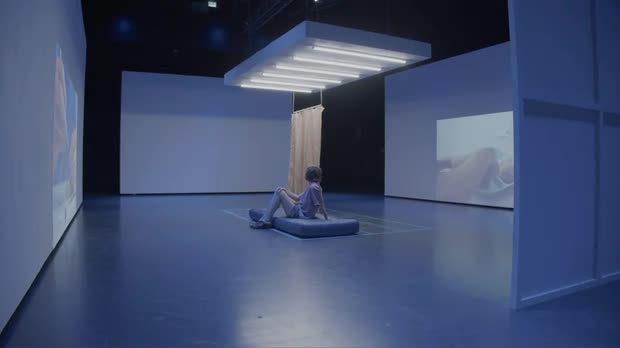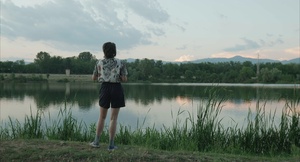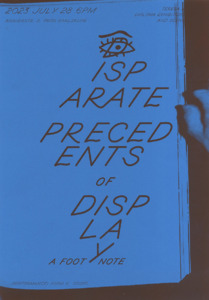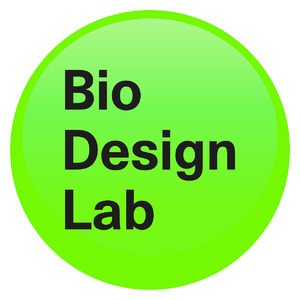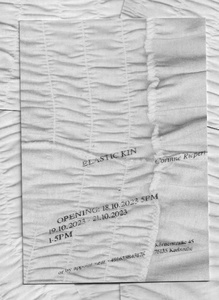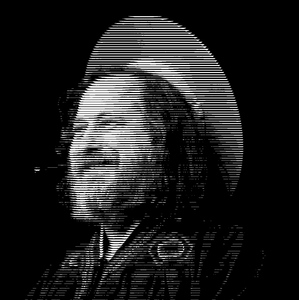Reflecting Bodies
Benachbarte Sets (121)Alle Zusammenhänge anzeigen
Diese Sets wurden den gleichen Sets hinzugefügt wie das ausgewählte Set.
121 Inhalte
- Seite 1 von 11
weisse vernunft – siedlungsbau der 20er jahre
- Titel
- weisse vernunft – siedlungsbau der 20er jahre
- Untertitel
- architektur und lebensentwurf im neuen bauen
- Autor/in
- Beschreibung (de)
- Die CD-ROM thematisiert den modernen Siedlungsbau der 20er Jahre, der zwischen 1925 und 1931 im Rahmen des Neuen Bauens in Deutschland entstanden ist. Ausgangspunkt ist die 1929 in Karlsruhe-Rüppurr unter der künstlerischen Leitung von Walter Gropius und Otto Haesler errichtete Dammerstock-Siedlung. Sie wird hier zum Anlaß eines umfangreichen, interaktiv begehbaren und multimedial erschlossenen Rundgangs durch dieses wesentliche Kapitel der Architekturgeschichte des 20. Jahrhunderts. Die Errungenschaften und Modelle des modernen Siedlungsbaus werden nicht nur aus architektonischer und städtebaulicher Sichtweise präsentiert. Eine Reihe von Exkursionen führen darüber hinaus in das soziale, politische und kulturelle Umfeld: Aspekte wie beispielsweise der Neue Mensch und die Neue (Haus-)Frau, Architekturfotografie und Typografie, Wohnungsbaupolitik und Konstruktionsgeschichte bilden die Anknüpfungspunkte für weitgespannte thematische Bögen und inhaltliche Assoziationsketten.
- Typ des Projekts/Werks
- Schlagworte
- Datierung
- 1999
- Mitwirkende
- Sprache
- Material
- Beteiligte Institution(en)
- Titel
- weisse vernunft – siedlungsbau der 20er jahre
- Importiert am
- 24.02.2017
- Übergeordnete Sets
- 0
- Set enthält
- 0 44
"Why do you make films?"
- Titel
- "Why do you make films?"
- Untertitel
- Präsentation und Ausstellung des Gideon Bachmann Archivs
- Autor/in
- Beschreibung (de)
- Das Interview-Archiv von Filmkritiker und Filmemacher Gideon Bachmann beinhaltet in etwa 500 Interviews mit bekannten Filmpersönlichkeiten, die in den Jahren zwischen 1954 und 2011 geführt wurden, und seit einigen Jahren am ZKM beheimatet ist. In den halbstündigen Gesprächen geht es Gideon Bachmann um nichts weniger als: "Why you make films? What you expect from the audience? Why you think audience is going to films? To what extent they expect to see the truth and to what extent they expect to see dreams, to what extent they expect to see other people, and to what extent they expect to see themselve?"
Auf dem diesjährigen Rundgang werden sechs ausgewählte Interviews präesentiert, und passende Filme der interviewten Filmemacher an den Abenden im blauen Salon vorgeführt.
Vorführung der Tonbänder in englischer Sprache, Raum 305, Freitag und Samstag, zwischen 15 Uhr und 19Uhr, jeweils zur vollen Stunde
Filmvorführungen (in Originalversionen mit Untertitel), blauer Salon, Donnerstag, Freitag und Samstag, 21 Uhr
- Das Interview-Archiv von Filmkritiker und Filmemacher Gideon Bachmann beinhaltet in etwa 500 Interviews mit bekannten Filmpersönlichkeiten, die in den Jahren zwischen 1954 und 2011 geführt wurden, und seit einigen Jahren am ZKM beheimatet ist. In den halbstündigen Gesprächen geht es Gideon Bachmann um nichts weniger als: "Why you make films? What you expect from the audience? Why you think audience is going to films? To what extent they expect to see the truth and to what extent they expect to see dreams, to what extent they expect to see other people, and to what extent they expect to see themselve?"
- Schlagworte
- Datierung
- 13.07.2017 - 16.07.2017
- Ort
- HfG Karlsruhe, Raum 305
- Stadt
- Land
- Titel
- "Why do you make films?"
- Importiert am
- 21.02.2018
- Übergeordnete Sets
- 0
- Set enthält
- 0 46
Klotz am Apparat
- Titel
- Klotz am Apparat
- Titel (en)
- The Klotz calling
- Autor/in
- Beschreibung (de)
- Die Forschungsgruppe Klotz-Archiv sammelt Audio-, Video- und Textdokumente aus den Jahren der Gründung der HfG mit dem Ziel der Einrichtung einer Archivplattform sowie der Produktion von Archivinstallationen, Archivperformances sowie Filmessays über die Reformhochschule HfG, ihre Gründungsidee und ihren Gründer Heinrich Klotz (1935-1999).
- Schlagworte
- Datierung
- 13.07.2016 - 17.07.2016
- Stadt
- Land
- Titel
- Klotz am Apparat
- Projektleiter/in
- Importiert am
- 22.02.2018
- Übergeordnete Sets
- 0
- Set enthält
- 0 44
Vakna
- Titel
- Vakna
- Titel (en)
- Vakna
- Untertitel
- Der menschliche Körper. Das Wiederentdecken. Das Akzeptieren. Das Erwachen
- Autor/in
- Beschreibung (de)
- Der menschliche Körper.
Das Wiederentdecken.
Das Akzeptieren.
Das Erwachen.
Diese Gedanken sind der Beginn des Spiels Vakna, einer Gedankenwelt, die sich mit der Wahrnehmung und der Akzeptanz des unbekleideten menschlichen Körpers befasst und dadurch gesellschaftliche Einflüsse hinterfragt.
In dieser Gedankenwelt ist es dem/der Spieler/in möglich durch auffindbare Fragen und Aussagen mehr über sich selbst, die eigene Wahrnehmung, das eigene Verhalten, die eigene Moral und die eigenen rituellen Gedankengänge den menschlichen Körper betreffend herauszufinden.
Die Gedankenwelt Vakna erwacht gemeinsam mit der spielenden Person, welche vielleicht beginnt die eigene Wahrnehmung, das eigene Verhalten, die eigene Moral und die eigenen rituellen Gedankengänge den menschlichen Körper betreffend zu hinterfragen, für sich selbst und gegenüber anderen Menschen neu zu ordnen oder zu verändern.
Am Ende dieses Spiels hat jede Person für sich selbst zu entscheiden, ob das Wiedererwachen des Körpers und damit verbundene „Neu-Erleben“ der Welt ausprobiert oder gelebt werden möchte.
Auch sind die Fragen zu beantworten, wie mit der neugewonnen Akzeptanz und Wiederentdeckung umzugehen ist. Doch hat die spielende Person bei dieser Entscheidung sich nicht dem Spiel gegenüber zu verantworten, sondern sich selbst und den Mitmenschen der Gesellschaft.
Bei diesem Computerspiel handelt es sich um einen Single-Player im Bereich der Serious- und Educational-Games, das mit Tastatur und Maus gespielt werden kann.
- Der menschliche Körper.
- Beschreibung (en)
- The human Body.
The Rediscovery.
The Accepting.
The Awakening.
These thoughts are the beginning of the game Vakna, a world of thoughts that deals with the perception and acceptance of the human body without clothes, thereby questioning social influences.
In this world of thoughts it is possible for the player to find out more about himself, his own perception, his own behavior, his own morality and his own ritual thoughts concerning the human body through discoverable questions and statements.
Vakna awakens together with the player. The player begins to question the own perception, the own behavior, the own morality and the own ritual thought processes concerning the human body and perhaps to rearrange or change them for themselves and for other people.
At the end of this game, each person has to decide for himself whether the body's reawakening and the „re-experiencing“ of the world would be tried out or lived.
Also, the questions to be answered are how to deal with the newly gained acceptance and rediscovery. But in this decision, the player does not have to answer to the game, but to himself and the fellow human beings of society.
This computer game is a single player in the field of serious and educational games that can be played with a keyboard and a mouse.
- The human Body.
- Typ des Projekts/Werks
- Schlagworte
- Datierung
- 21.11.2018
- Mitwirkende
- Sprache
- Material
- Technik/Verfahren/Formate
- Computerspiel für Windows
- Abmessungen
- 3D
- Ort
- Hochschule für Gestaltung Karlsruhe
- Stadt
- Land
- Internetlinks
- Titel
- Vakna
- Importiert am
- 16.11.2018
- Übergeordnete Sets
- 1
- Set enthält
- 1 21
Seeing With Four Eyes
- Titel
- Seeing With Four Eyes
- Titel (en)
- Seeing With Four Eyes
- Autor/in
- Beschreibung (de)
- Die Ausstellung "Seeing With Four Eyes" verfolgt die Objektbiografie der Statue Ngonnso' aus Kamerun durch verschiedene geografische, zeitliche und institutionelle Kontexte. Dieser erste Satz ist bereits fehlerhaft. Ist Statue überhaupt ein angemessener Begriff, um eine Figur zu beschreiben, die für die einen ein Lebewesen darstellt, während andere sie lediglich als Beispiel für materielle Kultur betrachten? Und ist Biografie der richtige Begriff, um das Leben eines Artefakts zu beschreiben? Ist sie an ihr materielles Wesen gebunden oder existiert sie schon lange bevor sie aus Holz geschnitzt wurde und lange nachdem sie von Termiten gefressen wurde oder in einem brennenden Museum verloren ging? In dem Bestreben, mehr über Ngonnso' zu erfahren, beschloss ich, sie bei ihrem Namen zu nennen und damit nicht vorzuschreiben, was sie ist. Ich habe versucht, die Fragmente einer Geschichte zu sammeln, die sich nicht zu einem Ganzen zusammenfügen lassen. Ich verfolgte Fäden, die bis zur Entstehungszeit zurückreichen, zu Strafexpeditionen und Kriegshandlungen des deutschen Kolonialreichs, zu Kulturfesten in Kamerun und Europa und zu einem Museum, das versucht, mit seiner Sammlung zurechtzukommen. Ich habe mit Menschen gesprochen, die sich entweder mit Ngonnso' selbst oder mit den Kampagnen, nationalen Gesetzen und der Politik beschäftigt haben, die sie beeinflusst haben und weiterhin beeinflussen. Ngonnso' befindet sich in einem Schwebezustand: Sie wird im Frühjahr 2019 von einem Museumsdepot am Rande Berlins in eine neue Museumseinrichtung im Stadtzentrum transportiert und damit erneut von einem gelagerten Objekt in ein Ausstellungsobjekt verwandelt. Zugleich ist sie Gegenstand laufender Restitutionsverhandlungen zwischen dem Oberhäuptling des Königreichs Nso', Fon Sehm Mbinglo I, dem Staat Kamerun, dem Ethnologischen Museum Berlin und dem deutschen Staat. "Seeing With Four Eyes" bietet einen Raum, um über diese Einheit in ihren vielfältigen und widersprüchlichen Dimensionen zu reflektieren.
- Beschreibung (en)
- The exhibition "Seeing With Four Eyes" follows the object biography of the statue Ngonnso’ from Cameroon through different geographical, temporal and institutional contexts. This first sentence is already flawed. Is statue even an adequate term to describe a figure that represents a living being to some people, while others merely see it as an example of material culture? And is biography the right term to describe the life of an artifact? Is it bound to its material being or does it exist well before it is carved out of wood and long after it is eaten by termites or lost in a burning museum? In the endeavour to learn more about Ngonnso’, I decided to call her by her name, thereby not predefining what she is. I tried to gather the fragments of a story that do not form a whole. I followed threads that go back to the time of creation, to punitive expeditions and acts of war carried out by the German colonial empire, cultural festivals in Cameroon and Europe, and to a museum trying to come to terms with its collection. I talked to people who have engaged either with Ngonnso’ herself or with the campaigns, national laws, and politics that have influenced and continue to influence her. Ngonnso’ is in a state of limbo: she will be transported from a museum depot in the outskirts of Berlin to a new museum institution in the city centre in the spring of 2019, once again being transformed from a stored object into an exhibition object. At the same time, she is subject of ongoing restitution negotiations between the paramount chief of the kingdom Nso’, Fon Sehm Mbinglo I, the state of Cameroon, the Ethnological Museum Berlin and the German state. "Seeing With Four Eyes" offers a space to reflect upon this entity through its multiple and contradictory dimensions.
- Typ des Projekts/Werks
- Schlagworte
- Datierung
- 14.11.2018 - 16.11.2018
- Sprache
- Ort: Institution
- Ort
- Lichtbrücke
- Stadt
- Land
- Titel
- Seeing With Four Eyes
- Projektleiter/in
- Semester
- Studiengang
- Typ der Abschlussarbeit
- Importiert am
- 24.05.2023
- Übergeordnete Sets
- 2
- Set enthält
- 0 5
Sorry I’ve been busy while you were dying
- Titel
- Sorry I’ve been busy while you were dying
- Titel (en)
- Sorry I’ve been busy while you were dying
- Autor/in
- Beschreibung (de)
- Würde man den Künstler danach fragen, würde er einem vermutlich die gleiche Auskunft geben, daher nehme ich an, dass auch ich alles Folgende sagen darf:
Felix Buchholz hat in der Gellertstraße 14, einer alten Fabrikantenvilla in der Karlsruher Weststadt, im Juli 2018, die Wohnung seiner verstorbenen Großmutter rekonstruiert. Die Wände und Decken dieser Rekonstruktion bestehen aus zusammengenähten Stoffen aus ebenjener Wohnung, die an einem nicht sichtbaren Hängekonstrukt angebracht sind. Man betritt die „Wohnung“, die Installation, per Konzept alleine, ohne Schuhe und solange man will.
Als ich sie betrete, weiß ich, dass Felix Buchholz die einzige Person war, zu der seine Großmutter überhaupt noch Kontakt hatte vor ihrem Tod, er hat mir erzählt, wie ihre gemeinsamen Treffen verlaufen sind, was sie dann taten, wie es in ihrer Wohnung aussah, die sie zuletzt eigentlich kaum mehr verließ, was er über ihr Leben wusste, ihre Eigenheiten und Ansichten, und was das mit seinem Vater, seiner Mutter und seiner eigenen Biografie zu tun hatte. Ich wusste, dass er eines Tages zu einem, wie immer, per Postkarte angekündigten Besuch vorbeikommen wollte und sie zum ersten Mal nicht öffnete, und dass, als die Polizei ihm ein paar Stunden später die Tür aufbrach, sich herausstellte, dass das nicht zum ersten Mal passierte, sondern bereits einige Tage zuvor das Gleiche passiert war, auf Anruf der Nachbarn hin, wegen des Geruchs. Und dass sie nur zwei Tage zuvor, vor seinem Besuch, alleine beerdigt worden sei. Von ihrer eigenen Beerdigung hatte sie eine genaue Vorstellung, die sie mit Felix abgesprochen hatte. So ist es unweit mehr als eine verpasste Chance, ein Abschiedsritual, bei dem allen voran Felix Buchholz nicht Abschied nehmen konnte.
Als ich die Installation betrete, habe ich im Nacken, die Vorstellung ebenjener Person und so mein ich dann manchmal mich umdrehen zu müssen, obwohl ich weiß, dass ich allein in der Stoffwohnung bin. Ich geh ins Wohn-/Schlafzimmer, dort steht, zentral, ein Bett, ein Sarg, eine Totenaufbahrung, in die man sich legen kann, oder soll, oder man soll sich zumindest fragen ob man sich hineinlegen soll oder eben nicht. Oben drauf ist Lavendel gepflanzt, Stoffe, Motten, Lavendel, und als ich mich hinlege gehen drinnen im Sarkophag hinter Stoff verkleidete Leuchtstoffröhren an, sie klicken und brummen, und ich erschrecke mich zu Tode. Ein bisschen ist das jetzt wie auf dem Seziertisch zu liegen, aber es ist auch nicht so unangenehm, dass ich sofort wieder gehen möchte. Beobachtet komme ich mir noch immer vor, so, als ob ich durch die von außen beleuchteten dünnen Stoffwände von dem Künstler, also Felix Buchholz, vielleicht beobachtet werden würde.
Deutungshoheit zu haben ist ein genuin künstlerisches Moment, nur, je mehr eine Geschichte den Anspruch auf eine individuelle Erfahrung, oder Authentizität hat, desto schleichender kommt die Einsicht, dass mit dem angenommenen Tod seiner Großmutter Felix in jeglichen Sinne zu ihrem Alleinerben geworden ist, zur Deutungshoheit auch über ihr Leben, und so zelebriert er hier eine zweite Totenwache. Im Bad geht ein Fön an, ich denke, aha, es ist doch jemand zweites hier, vorher erschrecke ich zu Tode durch das Geräusch, das mich aus meiner arglosen Haltung, der kontemplativen Situation reist. Ich schleiche mich ins Bad, wo einige Föns von der Decke hängen, die jetzt wild im Raum hin- und herschlackern, vom Rückstoß des Föndrucks, der aus dem Nichts gekommen sein muss. Im Flur, der auch, weiß ich, hat er mir erzählt, als Küche genutzt wurde, gibt es ein kleines Stoffloch, eine Höhle für den Kopf in der Wand, eine Aufforderung sich auf den Rücken zu legen und das darin laufende Video über sich anzusehen, von der originalen, nur leergeräumten Wohnung, während Felix die Wohnung beschreibt. Während ich da liege und meine Füße, abgetrennt von meinem Kopf aufgestellt in dem Flur seiner verstorbenen Großmutter liegen, denke ich, wenn sie das sehen könnte, das wäre eine sehr schöne One Minute Sculpture. Also, ich werde das Gefühl nicht los, man beobachtet mich.
35qm sind es insgesamt, einmal geh ich noch durch die Wohnung, auf dem Weg nach draußen ziehe ich meine Schuhe wieder an, ihre stehen noch immer fein aufgereiht da. Im Foyer der Gellertstraße 14, in dem man sich jetzt wieder befindet, findet man auf dem dort an der Treppe angebrachten Lift liegt ein bedrucktes Handtuch liegen, bedruckt mit einem Foto der Frau, die Felix Großmutter ist. Sie hat ein Kleidungsstück mit Leoprint an und sieht sehr schick aus damit, ein bisschen makaber ist das schon, sie liegt da so flach auf dem Treppenlift, sieht aber ganz zufrieden dabei aus. Daneben findet sich am Boden so eine Art Schrein, und über all dem hängt eine schwarze Flagge, eben, Totenwache. Und Felix, der Totenwächter?, weil, was man nicht vergessen darf, niemand hat sich die Ausstellung angesehen, ohne, dass er die Haustür geöffnet hat, und ohne, dass er wieder da war, wenn man rauskam. Wenn man dann mit ihm gesprochen hat, haben drinnen die Föns immer noch weitergeturnt von Zeit zu Zeit und vielleicht hat er einem dann erst mal ein Glas Leitungswasser angeboten.
Text von Judith Milz.
- Würde man den Künstler danach fragen, würde er einem vermutlich die gleiche Auskunft geben, daher nehme ich an, dass auch ich alles Folgende sagen darf:
Felix Buchholz hat in der Gellertstraße 14, einer alten Fabrikantenvilla in der Karlsruher Weststadt, im Juli 2018, die Wohnung seiner verstorbenen Großmutter rekonstruiert. Die Wände und Decken dieser Rekonstruktion bestehen aus zusammengenähten Stoffen aus ebenjener Wohnung, die an einem nicht sichtbaren Hängekonstrukt angebracht sind. Man betritt die „Wohnung“, die Installation, per Konzept alleine, ohne Schuhe und solange man will.
Als ich sie betrete, weiß ich, dass Felix Buchholz die einzige Person war, zu der seine Großmutter überhaupt noch Kontakt hatte vor ihrem Tod, er hat mir erzählt, wie ihre gemeinsamen Treffen verlaufen sind, was sie dann taten, wie es in ihrer Wohnung aussah, die sie zuletzt eigentlich kaum mehr verließ, was er über ihr Leben wusste, ihre Eigenheiten und Ansichten, und was das mit seinem Vater, seiner Mutter und seiner eigenen Biografie zu tun hatte. Ich wusste, dass er eines Tages zu einem, wie immer, per Postkarte angekündigten Besuch vorbeikommen wollte und sie zum ersten Mal nicht öffnete, und dass, als die Polizei ihm ein paar Stunden später die Tür aufbrach, sich herausstellte, dass das nicht zum ersten Mal passierte, sondern bereits einige Tage zuvor das Gleiche passiert war, auf Anruf der Nachbarn hin, wegen des Geruchs. Und dass sie nur zwei Tage zuvor, vor seinem Besuch, alleine beerdigt worden sei. Von ihrer eigenen Beerdigung hatte sie eine genaue Vorstellung, die sie mit Felix abgesprochen hatte. So ist es unweit mehr als eine verpasste Chance, ein Abschiedsritual, bei dem allen voran Felix Buchholz nicht Abschied nehmen konnte.
- Typ des Projekts/Werks
- Schlagworte
- Datierung
- 2018
- Mitwirkende
- Sprache
- Ort
- Villa Gellert, Gellertstraße 14
- Stadt
- Land
- Titel
- Sorry I’ve been busy while you were dying
- Projektleiter/in
- Semester
- Studiengang
- Typ der Abschlussarbeit
- Importiert am
- 24.05.2023
- Übergeordnete Sets
- 2
- Set enthält
- 0 7
7QM
- Titel
- 7QM
- Titel (en)
- 7sqm - inside views
- Untertitel
- Innen(an)sichten
- Autor/in
- Beschreibung (de)
- Was passiert, wenn Individuen in engen, geschlossenen Räumen mit kaum persönlicher, sondern standardisierter, fest verankerter, textilloser Ausstattung leben, in denen sie einer permanenten Überwachung und Kontrolle sowie streng geregelten Tagesabläufen ausgesetzt sind?
Mascha Dilger untersucht die Parameter sanktionierender Räume: Besuche in unterschiedlichen Justizvollzugsanstalten und Interviews mit ehemaligen Inhaftierten werden in der Rauminstallation 7qm - Innen(an)sichten verarbeitet. Realitäten eines vor der Gesellschaft verborgenen und von ihr verdrängten Ortes werden offengelegt.
Die Arbeit beleuchtet, wie aus einem fremdbestimmten, rasterartigen Alltag einer totalen Institution, Versuche der geistigen Flucht und der Selbstbestimmtheit hervorgehen können. Es werden ortsspezifische und subkulturelle Erscheinungsformen betrachtet, die als Überlebensstrategien zu verstehen sind.
- Was passiert, wenn Individuen in engen, geschlossenen Räumen mit kaum persönlicher, sondern standardisierter, fest verankerter, textilloser Ausstattung leben, in denen sie einer permanenten Überwachung und Kontrolle sowie streng geregelten Tagesabläufen ausgesetzt sind?
- Beschreibung (en)
- What happens when individuals live in narrow, confined spaces with hardly any personal but standardized, firmly anchored, textile-less furnishings, in which they are exposed to permanent surveillance and control as well as strictly regulated daily routines?
Mascha Dilger investigates the parameters of sanctioning spaces: visits to various prisons and interviews with former inmates are processed in the spatial installation "7qm - Innen(an)sichten". Realities of a place hidden from society are revealed.
The work illuminates how attempts of mental escape and self-determination can emerge from the grid-like everyday life of a total institution. Site-specific and subcultural manifestations are considered, which are to be understood as survival strategies.
- What happens when individuals live in narrow, confined spaces with hardly any personal but standardized, firmly anchored, textile-less furnishings, in which they are exposed to permanent surveillance and control as well as strictly regulated daily routines?
- Kategorie
- Typ des Projekts/Werks
- Schlagworte
- Datierung
- 11.07.2023 - 12.07.2023
- Mitwirkende
- Dank an
- Zaur Ahlimanov
- Phillip Banian
- Jeremias Beckford
- Sandra Blatterer
- Barbara Bohnen
- Matthias Bruhn
- Richard Brunner
- Céline Condorelli
- Hannah Cooke
- Jaya Demmer
- Lina Determann
- Alfred Dilger
- Nicola Dilger
- Susanne Dilger
- Manfred Döpke
- Nina Eberle
- Kerstin Eisenmenger
- Constanze Fischbeck
- Ebba Fransén Waldhör
- Laura Haak
- Uwe Habel
- Laurine Haller
- Igor Hardt
- Lina Höhne
- Lovis Iglinski
- Martina Kaltenbrunner
- Tobias Keilbach
- Alexander Knoppik
- Katja Koch
- Mikail Kolbasar
- Hanne König
- Susanne Kriemann
- Claudia Kröhl
- Barbara Kuon
- Alexia Metge
- Paulina Mimberg
- Ilja Morgenstern
- Leonie Mühlen
- Minh Anh Nguyen
- Luise Peschko
- Vlado Petrovic
- Milena Petrovic
- Tibor Pilz
- Christian Platz
- Paul Platz
- Waldemar Präg
- Corinne Riepert
- Thomas Rustemeyer
- Sebastian Schäfer
- Max Schäffer
- Philipp Schell
- Susanne Schmitt
- Mischa Schneider
- Waldemar Schwab
- Henriette Schwabe (Jette Schwabe)
- Manuel Sékou
- Alexander Theis
- Alexander Thelen
- Lisa Tölle
- Jan Tölle
- Lioudmila Voropai
- Badaue
- Initiative „Faites Votre Jeu!“
- AStA
- JVA Bühl
- Exit - Enter Life e.V.
- JVA Mannheim
- Sprache
- Material
- Ort: Institution
- Ort
- im großen Studio
- Stadt
- Land
- Beteiligte Institution(en)
- Titel
- 7QM
- Projektleiter/in
- Semester
- Studiengang
- Typ der Abschlussarbeit
- Importiert am
- 26.07.2023
- Übergeordnete Sets
- 3
- Set enthält
- 4 2
Geography is destiny
- Titel
- Geography is destiny
- Titel (en)
- Geography is destiny
- Autor/in
- Beschreibung (de)
- In einem bulgarischen Tal, in dem die Produktion von Rosen und Waffen das Klima des Lebensraums bestimmt, begibt sich die Autorin des Films auf eine Identitätssuche, eine Reise entlang der bipolaren, psychogeografischen Realität ihres Geburtsorts.
- Beschreibung (en)
- In a Bulgarian valley where the production of roses and weapons determines the climate of the living environment, the film’s author takes off on an identity quest, a journey along the bipolar, psychogeographic reality of her birthplace.
- Typ des Projekts/Werks
- Schlagworte
- Datierung
- 01.09.2023
- Mitwirkende
- Dank an
- Sprache
- Untertitel (Film)
- Technik/Verfahren/Formate
- dcp
- Dauer
- 75min.
- Ort: Institution
- Ort
- Blauer Salon
- Stadt
- Land
- Bemerkungen
- The film copy will be archived at the Film Archiv of HFG. Current contact person as per 2023 - Philip Lawall
- Titel
- Geography is destiny
- Projektleiter/in
- Semester
- Studiengang
- Typ der Abschlussarbeit
- Importiert am
- 26.09.2023
- Übergeordnete Sets
- 2
- Set enthält
- 0 3
Disparate Precedents of Display
- Titel
- Disparate Precedents of Display
- Titel (en)
- Disparate Precedents of Display
- Untertitel des Projekts/Werks (en)
- A Footnote
- Autor/in
- Beschreibung (de)
- "Disparate Precedents of Display" untersucht die Art und Weise, wie der Raum auf die Besucher wirkt, und stellt Ausstellungsdesign als eine genuin politische Praxis dar, die auf der Vergangenheit aufbaut und von ihr erbt - von vergangenen Ausstellungen, einflussreichen Ausstellungsgestalter*innen und Konventionen der Präsentation, die in unterschiedlichen politischen Systemen wurzeln.
Zwei Ausstellungen, die vom deutschen Staat in Auftrag gegeben wurden, dienen als Fallstudien. "Gebt mir vier Jahre Zeit" war eine nationalsozialistische Propagandaschau, die 1937 in Berlin stattfand. Sie feierte die Umgestaltung aller Bereiche der Gesellschaft unter der nationalsozialistischen Herrschaft seit der Umsetzung von Adolf Hitlers Vierjahresplan. Einundzwanzig Jahre später beauftragte die Bundesrepublik Deutschland denselben Architekten mit der Gestaltung des deutschen Pavillons auf der Expo '58 in Brüssel. Auf der Weltausstellung hatte der junge Nachfolgestaat zum ersten Mal die Gelegenheit, die kulturellen, wirtschaftlichen und politischen Parameter des nunmehr demokratischen Deutschlands auf internationaler Ebene zu präsentieren. Beide Ausstellungen lassen sich als Repräsentationen staatlicher Macht und politischer Narrative beschreiben - die eine im Namen des Krieges, die andere im Namen der Humanität. Maßgeblich beteiligt an beiden Ausstellungen war Egon Eiermann als Ausstellungsarchitekt.
Performance: Anna K. Seidel
Outside Eye: Caroline Kapp, Manon Haase
Graphikdesign: Mona Mayer
Single line font EE_7475: Barbara Acevedo Strange, Moritz Appich
Coding: Frank Bublitz
Stimme: Liv Rahel Schwenk
Aufzeichnung: Florian Wulff
Video Dokumentation: Mustafa Emin Büyükcoşkun
Photographien: Lizzy Ellbrück
Editorial support: Joyce Moore
Copyediting: George MacBeth
Special Thanks to
Céline Condorelli, Hanne König, Sami Khatib, Lioudmila Voropai,
Julian Warner, Thomas Rustemeyer, Constanze Fischbeck,
Susanne Kriemann, Hans D. Christ und Iris Dressler, Judith Milz,
Christian Becker (Stadtarchiv Oranienburg), Mechthild Ebert (saai),
Janina Capelle, Lydia Kähny, Daniel Lythgoe, Tjark Schönfeld,
Alexander Knoppik, Lena Breitmoser, Sören Göbel, Jule Köpke, Arthur Schuman,
Jana Barthel and Danny Klein.
Gefördert von
Fonds Darstellende Künste (Rechercheförderung)
Rosa Luxemburg Stiftung Baden Württemberg
- "Disparate Precedents of Display" untersucht die Art und Weise, wie der Raum auf die Besucher wirkt, und stellt Ausstellungsdesign als eine genuin politische Praxis dar, die auf der Vergangenheit aufbaut und von ihr erbt - von vergangenen Ausstellungen, einflussreichen Ausstellungsgestalter*innen und Konventionen der Präsentation, die in unterschiedlichen politischen Systemen wurzeln.
- Beschreibung (en)
- "Disparate Precedents of Display" looks at the way space affects visitors, exposing exhibition design as a genuinely political practice, building on and inheriting from the past – from past exhibitions, influential exhibition designers and conventions of display rooted in disparate political systems.
Two exhibitions, commissioned by the German state, serve as case studies. “Gebt mir vier Jahre Zeit” was a National Socialist propaganda show staged in Berlin in 1937. It celebrated the transformation of all sectors of society under National Socialist rule since the implementation of Adolf Hitlers 4-year-plan. Twenty-one years later, the Federal Republic of Germany commissioned the same architect to design the German Pavilion at the Expo ‘58 in Brussels. At the World‘s Fair the young successor state had its first opportunity to present the cultural, economic and political parameters of a now democratic Germany on an international scale. Both shows can be described as representations of state power and political narratives – one in the name of war and one in the name of humanity. Significant contributor to both exhibitions was Egon Eiermann in his role as exhibition architect.
Performance: Anna K. Seidel
Outside Eye: Caroline Kapp, Manon Haase
Graphic Design: Mona Mayer
Single line font EE_7475: Barbara Acevedo Strange, Moritz Appich
Coding: Frank Bublitz
Voice: Liv Rahel Schwenk
Recording: Florian Wulff
Video documentation: Mustafa Emin Büyükcoşkun
Photography: Lizzy Ellbrück
Editorial support: Joyce Moore
Copyediting: George MacBeth
Special Thanks to
Céline Condorelli, Hanne König, Sami Khatib, Lioudmila Voropai,
Julian Warner, Thomas Rustemeyer, Constanze Fischbeck,
Susanne Kriemann, Hans D. Christ und Iris Dressler, Judith Milz,
Christian Becker (Stadtarchiv Oranienburg), Mechthild Ebert (saai),
Janina Capelle, Lydia Kähny, Daniel Lythgoe, Tjark Schönfeld,
Alexander Knoppik, Lena Breitmoser, Sören Göbel, Jule Köpke, Arthur Schuman,
Jana Barthel and Danny Klein.
Funded by
Fonds Darstellende Künste (Rechercheförderung)
Rosa Luxemburg Stiftung Baden Württemberg
- "Disparate Precedents of Display" looks at the way space affects visitors, exposing exhibition design as a genuinely political practice, building on and inheriting from the past – from past exhibitions, influential exhibition designers and conventions of display rooted in disparate political systems.
- Typ des Projekts/Werks
- Schlagworte
- Datierung
- 28.07.2023
- Mitwirkende
- Dank an
- Sprache
- Dauer
- Performance: ca. 30 Minuten
- Ort
- Pavillon an der Brauerstraße
- Stadt
- Land
- Titel
- Disparate Precedents of Display
- Projektleiter/in
- Semester
- Studiengang
- Typ der Abschlussarbeit
- Importiert am
- 28.09.2023
- Übergeordnete Sets
- 3
- Set enthält
- 0 17
Bio Design Lab
- Titel
- Bio Design Lab
- Beschreibung (de)
- Das Bio Design Lab ist ein hybrider und evolutiver Ort, der sowohl im digitalen als auch im physischen Raum existiert. Konzipiert als wachsende Plattform, die die Fachbereiche der Staatlichen Hochschule für Gestaltung miteinander verbindet, wird das Labor als Raum für Präsentation, Bildung und Wissensvermittlung genutzt.
Das Bio Design Lab konzentriert sich auf die lokale Region, ihre Ressourcen und Möglichkeiten und zielt aktiv darauf ab, die Produktionsweisen in Karlsruhe und Süddeutschland umzugestalten und neu zu überdenken. Zur Interaktion mit diesen Themen und Materialien, sowohl im digitalen als auch im physischen Raum, lädt das Labor lokale ExpertInnen und BesucherInnen gleichermaßen ein an gemeinsamen Projekten zu arbeiten.
Spuren dieser Aktivitäten komplementieren ein ständig wachsenden Netzwerk.Das Wissen über diese Ressourcen wird durch die Erstellung eines Know-how-Glossars und einer Materialbibliothek destilliert, durch virtuelle und physische Workshops vermittelt, sowie durch die Präsentationen herausragender Projekte, die sich mit nachhaltigen Materialien befassen, kommuniziert.
Das Labor fungiert als Inkubator und Modell für Zusammenarbeit und Produktion, das im Einklang mit dem aktuellen Wandel der Staatlichen Hochschule für Gestaltung Karlsruhe steht.
- Das Bio Design Lab ist ein hybrider und evolutiver Ort, der sowohl im digitalen als auch im physischen Raum existiert. Konzipiert als wachsende Plattform, die die Fachbereiche der Staatlichen Hochschule für Gestaltung miteinander verbindet, wird das Labor als Raum für Präsentation, Bildung und Wissensvermittlung genutzt.
- Beschreibung (en)
- The Bio Design Lab is a hybrid and evolutive environment that exists in both the digital and physical space. Conceived as a platform for connection and collaboration with local partners and using local resources, the Lab hosts the presentation, education and transmission of knowledge. As students and experts are invited to work on bio-design related projects, visitors can explore and interact with the Lab’s production and lines of inquiry.
Projects within the Lab focus on the local region, its materials and possibilities, and actively aim to reshuffle and rethink modes of production in Karlsruhe and the south of Germany. Topics under exploration include Algae, Soil, Plants, Body, and Agriculture. To interact with these themes and related materials, both within the digital and physical space, the Lab invites local experts and visitors alike.
Within the Bio Design Lab, regional resources are collected by connecting with local partners; they are then distilled through the making of a know-how glossary and a material library, aiming to develop local materials. The knowledge around these resources is disseminated through virtual workshops and multimedia presentations of outstanding projects dealing with sustainable materials. Ultimately, traces of these activities will remain in a constantly growing network, both in the digital platform and in physical displays of existing and future objects.
The Lab works as an incubator and a model for collaboration and production that is in line with the current transformation of the Karlsruhe University of the Arts and Design Karlsruhe. It was first presented to the public in the context of Critical Zones, an exhibition at ZKM | Center for Art and Media.
- The Bio Design Lab is a hybrid and evolutive environment that exists in both the digital and physical space. Conceived as a platform for connection and collaboration with local partners and using local resources, the Lab hosts the presentation, education and transmission of knowledge. As students and experts are invited to work on bio-design related projects, visitors can explore and interact with the Lab’s production and lines of inquiry.
- Schlagworte
- Ort: Institution
- Ort
- Bio Design Lab
- Stadt
- Land
- Internetlinks
- Titel
- Bio Design Lab
- Projektleiter/in
- Importiert am
- 23.10.2023
- Übergeordnete Sets
- 0
- Set enthält
- 5 2
Elastic Kin
- Titel
- Elastic Kin
- Autor/in
- Beschreibung (de)
- Die Rauminstallation “Elastic Kin” zeigt eine Gruppe von Textilobjekten - Gefüge -, die aus weggeworfenen Kleidungsstücken bestehen. Sie existieren sowohl als Individuen als auch als Gruppe. Die Kleidungsstücke, die in den Straße von K. gefunden wurden und von Anderen in anderen Kontext hergestellt worden sind, kehren ihren ursprünglichen Zweck um, indem sie zu eigenen Körpern werden, die unabhängig von menschlichen Körpern sind. Jede Oberfläche ist wie eine geheime Landkarte, die Spuren anonymer Hände enthält, die an den Textilien gearbeitet haben.
Der Sound der Installation ist ein Echo - fast verschwundener, kollektiver Erinnerungen an vergangene Momente und Orte.
“Elastic Kin” versucht, eine weit verbreitete Verwandtschaft darzustellen, die durch unsichtbare, lose und elastische Fäden imaginiert wird, die ein internationales System von Lieferketten, Arbeiter*Innen und Konsument*Innen, Trendprognosen und unvorhersehbarem Zeitgeist, Massenproduktion und meditativer Handarbeit abbilden. Welche Spuren dieser Kontexte enthalten die Kleidungsstücke?
Das Video zeigt eine performative Intervention im öffentlichen Raum. Es zeigt die Gefüge, die eine neue Existenz außerhalb ihrer Produktions- und Vermarktungskontexte führen: Sie kehren in ein Einkaufszentrum zurück, animiert von den Menschen, die sie einst bekleideten.
- Die Rauminstallation “Elastic Kin” zeigt eine Gruppe von Textilobjekten - Gefüge -, die aus weggeworfenen Kleidungsstücken bestehen. Sie existieren sowohl als Individuen als auch als Gruppe. Die Kleidungsstücke, die in den Straße von K. gefunden wurden und von Anderen in anderen Kontext hergestellt worden sind, kehren ihren ursprünglichen Zweck um, indem sie zu eigenen Körpern werden, die unabhängig von menschlichen Körpern sind. Jede Oberfläche ist wie eine geheime Landkarte, die Spuren anonymer Hände enthält, die an den Textilien gearbeitet haben.
- Beschreibung (en)
- The spatial installation “Elastic Kin” shows a group of textile objects – Gefüge – that were assembled from discarded and abandoned garments. They exist as individuals as well as a kin. Assembled from used garments, found in the streets of K., produced by others in other contexts, they invert their original purpose by becoming bodies of their own, no longer dependent on being activated by a human body. The surface of every Gefüge is like a secret map, containing traces of anonymous hands working on them.
The sound in the installation is an echo of almost vanished collective memories of past moments and places. “Elastic Kin” attempts to depict a widespread kinship, that is imagined through invisible, loose and elastic threads mapping an international system of supply chains, workers and consumers, trend forecast and unpredictable zeitgeist, mass production and meditative handcraft. Which traces of these contexts do the garments contain?
The video shows a performative intervention in pub- lic space. It shows the Gefüge leading a new existence outside their production and marketing contexts: They return to the shopping mall, animated by the people, they once used to dress.
- The spatial installation “Elastic Kin” shows a group of textile objects – Gefüge – that were assembled from discarded and abandoned garments. They exist as individuals as well as a kin. Assembled from used garments, found in the streets of K., produced by others in other contexts, they invert their original purpose by becoming bodies of their own, no longer dependent on being activated by a human body. The surface of every Gefüge is like a secret map, containing traces of anonymous hands working on them.
- Typ des Projekts/Werks
- Schlagworte
- Datierung
- 18.10.2023
- Mitwirkende
- Dank an
- Sprache
- Untertitel (Film)
- Material
- Ort: Institution
- Stadt
- Land
- Titel
- Elastic Kin
- Projektleiter/in
- Semester
- Studiengang
- Typ der Abschlussarbeit
- Importiert am
- 02.11.2023
- Übergeordnete Sets
- 3
- Set enthält
- 0 22
Who cares?
- Titel
- Who cares?
- Titel (en)
- Who Cares?
- Untertitel
- Digitale Sozialität, Infrastrukturen der Fürsorge und konviviale Technologien
- Untertitel des Projekts/Werks (en)
- Digital sociality, care infrastructure and convivial technology
- Autor/in
- Beschreibung (de)
- Die Hackerkultur verbindet Theorie und Praxis (nach hand-on Prinzipien) und einen neuen Ansatz für Kulturmaterialien ("information wants to be free"), der nicht nur eine andere Epistemologie, sondern auch einen neuen politischen Diskurs über Digitalität, Geräte und Menschen impliziert. Das Verhältnis zwischen Technik und Politik dieser Gruppe wird im ersten Kapitel analysiert: Zuerst wird die Entstehung proprietärer Software betrachtet, dann die Unterschiede zwischen Open Source und freier Software, und wie im letzten die Privateigentum und die soziale Beziehung zwischen Programmen, Benutzern und Entwicklern radikal in Frage gestellt werden. Später wird diese Beziehung anhand von Hanna Arendts 'Die conditio humana' in Bezug auf Arbeit, Herstellen und Handlen, Notwendigkeit und Freiheit, die die Bedingungen für Politik schaffen, weiter diskutiert. Im zweiten Kapitel wird das Konzept der Konvivialität (Ivan Illich) vorgestellt und diskutiert. Diese Idee wird später in der Wartung als infrastrukturelle Vorsorge weiterentwickelt und als ein zentrales Element digitaler Technologien vorgeschlagen, das weiter diskutiert werden sollte. Diese Konstellation des Denkens und Handelns, des Spielens und Lernens, des Experimentierens und der Übernahme von Verantwortung sowie der Politik und der sozialen Beziehungen sollte in der Technologiedebatte eine wichtige Rolle spielen.
- Beschreibung (en)
- Hacker culture connects theory and praxis (following hand-on principles) and a new approach to culture materials ("information wants to be free"), that implies not only a different epistemology, but also a new political discourse on digitality, devices, and people. The relation between technic and politic of this group is analyzed in the first chapter: first focusing on the emergence of proprietary software; then considering the differences between open source and free software, the last one challenging radically the notion of private property and the social relation among programs, users, and developers. Later on, reading Hanna Arendts 'The Human condition, the relation will be further discussed in terms of labor, work and action, necessity and freedom, which establish the conditions for politics. In the second chapter, the concept of conviviality (Ivan Illich) is introduced and discussed. This idea is later developed in maintenance as infrastructural care and proposed as a central element of digital technologies that should be further discussed. This constellation of thinking and acting, playing and learning, experimenting and taking responsibility, as well as politics and social relations should play a prominent role in the debate about technology.
- Kategorie
- Typ des Projekts/Werks
- Schlagworte
- Datierung
- 30.03.2023
- Sprache
- Titel
- Who cares?
- Projektleiter/in
- Semester
- Studiengang
- Typ der Abschlussarbeit
- Importiert am
- 30.11.2023
- Übergeordnete Sets
- 3
- Set enthält
- 0 4
